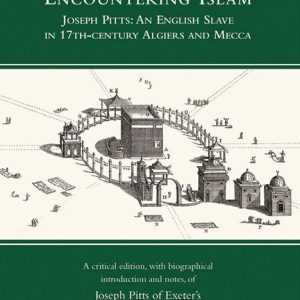Epigraphist, artist, keen hiker, nature-lover and traveller, the German scholar Julius Euting (1839–1913) was one of the great Semitists of his time. Born in Stuttgart, he moved to Strasbourg in 1872 just after the German annexation of Alsace-Lorraine to take up a post as librarian in the newly founded Kaiser Wilhelm University, and adopted it as his home. In a life full of academic achievement, he made ground-breaking contributions to Punic, Hebrew and Aramaic studies.
In 1883, Euting embarked on his most significant and dangerous journey, in the company of the French-Alsatian geographer Charles Huber (1847–84). Their expedition into remote northern Arabia, first to Ha’il and then through areas that Huber had already explored in 1880–81, had as its goal the collection of ancient texts and the investigation of archaeological sites such as Taymā’ and Madā’in Sālih, and was also intended to enable Huber to firm up his geographical discoveries. But they failed to collaborate successfully. Their relationship was poisoned by Franco-German rivalry and Huber’s financial dependence upon Euting, and the two men separated at Madā’in Sālih. Euting made his way to the Red Sea coast at great risk to his life, while Huber stayed on in Arabia, only to be murdered north of Jiddah in July 1884.
Euting’s notebooks are replete with vivid observation, entertaining anecdotes and personal reactions, alongside the earliest careful records of Aramaic, Nabataean and Ancient North Arabian inscriptions and rock art. Their most outstanding feature is the vast quantity of watercolours and sketches that adorn them. A version of these notebooks was published in 1896 and 1914 as Tagbuch einer Reise in Inner-Arabien, with line drawings based on these watercolours. This important document of European exploration of Arabia is presented here for the first time in English, with a lavish selection of Euting’s original artwork in place of the published line drawings. William Facey’s introduction presents the story of Euting’s life and his relationship with Huber, and sets his 1883–84 journey in the context of 19th-century Arabian exploration.
Finally, the affair of the Tayma Stele, the celebrated Aramaic inscription now in the Musée du Louvre, comes under the spotlight. In a new analysis of this notorious Franco-German imbroglio, the prevailing idea that Huber first saw it in 1880 is held up to scrutiny, and Euting at last given proper credit for its discovery in 1884.
Edited by William Facey & Michael C.A Macdonald
Translated by Christopher Metcalf
Available May 2025 PRE-ORDER NOW
—
William Facey is a historian, publisher and museum planner. Having read Classics, philosophy and art history at Wadham College, Oxford, he first went to Arabia in 1974, since when he has participated in various museum projects in the region, notably in Saudi Arabia. His books, introductions and articles cover the history, architecture and early photography of the Arabian Peninsula countries, as well as Arab maritime history, Islam among the British, and Western travellers in Arabia, with a focus on those visiting Islam’s holy cities. He founded Arabian Publishing in London in 2002, and ran it until 2015, when it was acquired by Medina Publishing Ltd. His latest book, Charles Huber: France’s Greatest Arabian Explorer, was published in 2022.
Michael C.A. Macdonald is an Honorary Fellow of Wolfson College, Oxford and a Fellow of the British Academy. His research focuses on ancient literacy, the languages, scripts and inscriptions of northern Arabia, Jordan and Syria, and the ancient history of the nomads of the region. He has been directing epigraphic surveys in the area for the last forty-five years, and currently directs the Badia Epigraphic Survey in Jordan and co-directs the Saudi-British-German project Epigraphy and Landscape in the Hinterland of Taymā’. From 2013 to 2017, he created and directed the Online Corpus of the Inscriptions of Ancient North Arabia (OCIANA) project. In 2018 he was awarded an honorary doctorate by the University of Chicago.
Christopher Metcalf is of Anglo-German parentage, and came to Britain in 2003 to study classical and ancient Near Eastern languages, graduating with a DPhil from the University of Oxford. His research interests lie in the literatures and religions of early Greece and the ancient Near East; in these areas he has published The Gods Rich in Praise: Early Greek and Mesopotamian Religious Poetry (2015), and Sumerian Literary Texts in the Schøyen Collection Volume I: Literary Sources on Old Babylonian Religion (2019). He is now working on a book entitled: Servant, Lover, Fool: Three Myths of Ancient Kingship. He has been a Fellow of The Queen’s College, Oxford, since 2016.






